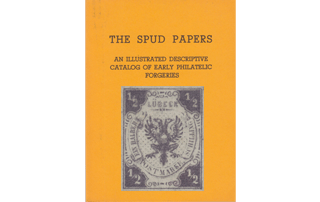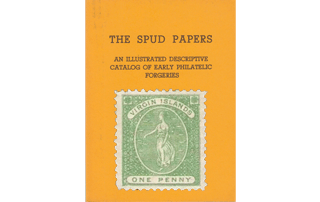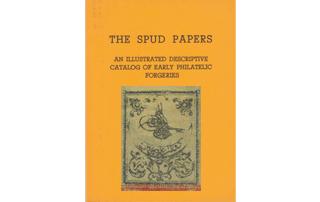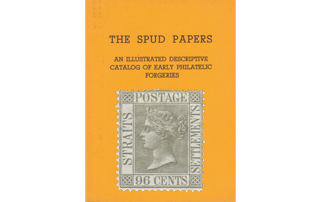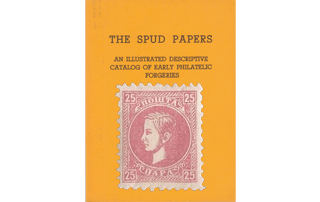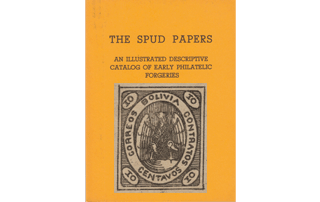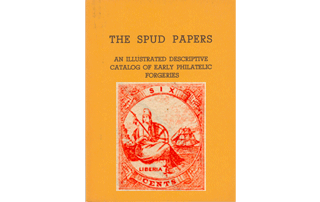Spud Papers – Lübeck
1859, First Issue.
Each value of the genuine is from a separate die; but one matrix has been made to do duty for the set of forgeries. The colours of the latter, with the exception of the 1 Schilling, approximate pretty closely to the originals.
 1/2 Schilling.
1/2 Schilling.
Genuine
Eagle’s right beak does not go against the wing. The bird does not touch the label in any place. There is no period after SCHILLING. The lines by which the figures are divided are very fine, and the figures themselves are small.
Forged
The right beak of the hermaphroditic eagle touches the wing. The three upper segments of the left wing nearly touch the riband, and the fourth quite touches it. There is a period after SCHILLING. All the lines dividing- the fractional figures are very bold, and the numerals themselves are large.
 1 Schilling.
1 Schilling.
Genuine
Eagle very much like the one upon the genuine 1/2 Schilling, but the right-hand head is more flattened, and consequently shapeless, EIN is in letters of the same size as those used in the words following it.
Forged
Eagle as in the 1/2 Schilling. EIN in much larger letters than the remainder of the inscription. The figure I, in upper left-hand angle, has no bottom stroke.
 2 Schilling.
2 Schilling.
Genuine
Eagle’s left beak touches the wing, and the right one nearly so; there are no dots between the heads and wings. Over the u a diaeresis of very small solid dots.
Forged
Similar eagle to the last, G in SCHILLING smaller than its companion letters. Between each of the eagles’ heads and wings are dots. The diaeresis over U in LUBECK is composed of small circles. The second dot on the first row of the dotted ground is considerably above the level of the others.
 2 1/2 Schilling.
2 1/2 Schilling.
Genuine
Eagle’s left claw is at some little distance from the inscribed riband. No full-stop after any of the words. All the fractional figures are very small, and the strokes dividing them nearly indistinct. The top-most of the three dashes under the upright stroke upon the left hand is merely a dot.
Forged
Eagles as before, both claws touching the label. A period after both SCHILLING and POSTMARKS. The tail of the 2 in the upper left- hand angle almost touches the white line of frame. Figures altogether stand out boldly. The three horizontal strokes under the perpendicular line on the left side are nearly of one length.
 4 Schilling.
4 Schilling.
Genuine
The third segment of eagle’s right wing touches the riband. There are either four or five dots (but only three are clearly formed) in the hollow between the beak and wing, and those not together, but dispersed, P in POSTMARKE almost touches the fold of the band.
Forged
Eagle as in the other values. Three dots one above another just at the bend of the right neck. The right wing is at some little distance from the riband. There is room for the insertion of another letter between the line representing the fold of the riband and the p of POSTMARKE.
 1864, 1 1/4 Schilling.
1864, 1 1/4 Schilling.
In addition to the values described in our last paper, the great Hamburg facsimile firm are the makers of a very passable imitation of the 1 1/4 Schilling.
Genuine
There are two dots between the necks of the eagle, and the tail touches the frame. The lower portion of the B is wretchedly done.
Forged
Between the necks of the eagle is a single dot; the tail of the bird is at some distance from the bottom of the oval, and the B of LÜBECK is well-shaped. The forgery is usually on bluish paper; the original always on white.
From “The Spud Papers” by Atless, Pemberton & Earée, 1871-1881.

